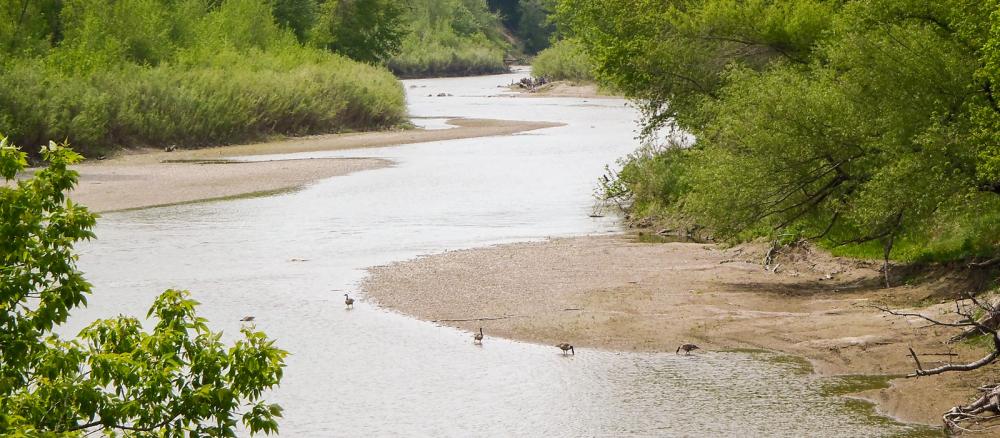Torrential downpours hit southern Minnesota last July, with some areas receiving two months’ worth of rain in one weekend. Climatologists have recorded storms of this magnitude, called mega rains, just 17 times in Minnesota since the 1970s. If they may feel more frequent than that, it’s because 11 of those storms have hit in the last two decades, as climate change intensifies rain events.
Mankato residents woke up to flash floods and closed roads after July’s mega rain, but these consequences are only a small part of how heavy rains affect the state. Water quality also shifts dramatically after a storm.
Hydrologist Pat Baskfield of the MPCA has spent more than two decades monitoring surface water with the MPCA, and he’s seen the changes from intensified rainfall first hand on the Watonwan and Blue Earth rivers. “From a water volume standpoint, these rivers are unraveling. It’s crazy,” says Baskfield.
Heavy rains drop more water than the soil can hold, so the water runs off the landscape and directly into the rivers. This overland flow carries sediment and fertilizers with it, which pollute the waterways. “It’s hard to even get on [the rivers for recreation] much before August because either there’s too much water or the water’s too dirty,” explains Baskfield. The high-flow conditions also cause streambank erosion, which knocks down trees and widens the river to a flat, shallow basin. These changes hurt paddlers and anglers alike, as the river loses its depth and its fish habitats.
Rain effects from climate change are compounded in southern Minnesota by the use of drain tile and other changes in the landscape. Drain tiles are plastic pipes installed under farmland to remove excess water from the soil, creating optimum moisture conditions for crops. In addition, counties in southern and western Minnesota have lost an average of 95 percent of their wetlands since European settlement of the area, due to artificial drainage and agricultural development. Wetlands retain water on the land, slowing runoff and helping to replenish groundwater.
Now when it rains, the water hits farm fields and is short-circuited through tiles to the river. Baskfield explains that short-circuiting the precipitation means the water has no time to shed its fertilizer content in soil layers. It also can’t evaporate to the atmosphere or soak into the soil, increasing river volume. “It just saddens me to no end to see these rivers treated the way they are,” says Baskfield.
Although the work can be frustrating, Baskfield has seen some improvements on the rivers in recent years. Solutions like buffers and cover crops hold soil in place, which lowers sediment levels in the rivers. Research funded by MnDRIVE at the University of Minnesota is developing drainage systems that reduce the amount of fertilizer reaching the rivers. While there’s still a long way to go to protect water quality in our changing climate, the effort is worth it for Baskfield. “These rivers belong to everybody, and they should be treated as such,” he says.
— By Caroline Frischmon
Caroline Frischmon is a University of Minnesota student who works with the Science Communication Lab and completed an internship with the MPCA in 2020.
